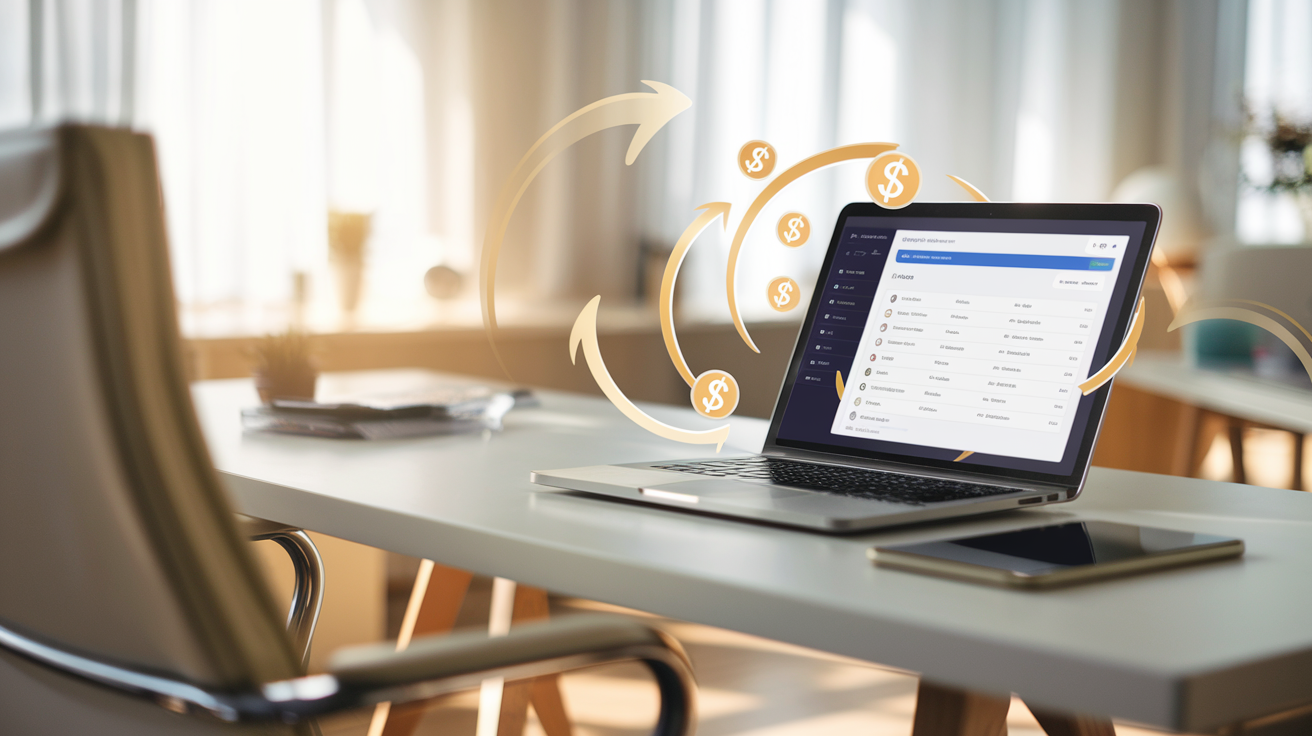The Secret to Crafting Bonuses That Make People Buy
Have you ever wondered why some products fly off the shelves while others sit untouched? The answer often lies in one powerful word: bonuses. When done right, bonus offers can transform hesitant browsers into eager buyers, turning your marketing efforts into a profit-generating machine.
The secret to crafting bonuses that make people buy isn’t about throwing random freebies at your customers. It’s about understanding psychology, creating genuine value, and presenting offers that feel too good to pass up. In this comprehensive guide, you’ll discover the proven strategies that top marketers use to create irresistible bonus packages that boost conversions and increase sales.
Why Bonuses Are Marketing Gold
Before diving into the how-to, let’s understand why bonuses work so well. Human psychology plays a massive role in purchasing decisions, and bonuses tap into several powerful psychological triggers that influence buying behavior.
The Reciprocity Principle is one of the strongest forces at work. When you offer something valuable for free, customers feel compelled to reciprocate by making a purchase. This isn’t manipulation – it’s human nature. People genuinely appreciate added value and want to support businesses that go the extra mile.
Loss aversion is another key factor. People fear missing out on a good deal more than they desire gaining something new. When you present a limited-time bonus offer, you’re creating urgency that pushes customers toward action. The thought of losing that bonus becomes more powerful than the desire to keep their money.
Perceived value also plays a crucial role. A well-crafted bonus can dramatically increase the perceived value of your main offer without significantly impacting your costs. This creates a win-win situation where customers feel they’re getting an amazing deal while you maintain healthy profit margins.
The Psychology Behind Irresistible Bonus Offers
Understanding customer psychology is essential for creating bonuses that actually drive sales. Let’s explore the mental triggers that make certain offers absolutely irresistible.
Stacking Value works because customers love feeling like they’re getting more than they paid for. When you bundle multiple bonuses together, the combined perceived value often exceeds the price of the main product. This creates what marketers call “no-brainer” offers – deals so good that saying no feels foolish.
Social proof amplifies the effectiveness of your bonuses. When customers see that others have claimed your bonus offers and achieved positive results, they’re more likely to take action themselves. This is why testimonials and case studies featuring your bonus recipients are so powerful.
Immediate gratification versus delayed benefits creates an interesting dynamic. While your main product might deliver results over time, bonuses that provide instant value satisfy the customer’s need for immediate reward. This psychological satisfaction makes the entire purchase feel more rewarding.
The decoy effect can make your bonus offers seem even more attractive. By presenting multiple options where your bonus-enhanced offer clearly provides the best value, you guide customers toward the purchase you want them to make.
Essential Elements of High-Converting Bonuses
Creating bonuses that actually convert requires attention to specific elements that separate successful offers from forgettable ones. Each component must work together to create an irresistible package.
Relevance is perhaps the most critical factor. Your bonus must directly relate to your main product and your customer’s needs. A bonus that feels random or unrelated will confuse rather than convince. The best bonuses complement your main offer, enhancing its value and effectiveness.
Scarcity creates urgency that drives action. Limited-time offers, exclusive bonuses, or quantity restrictions make customers feel they need to act quickly. However, scarcity must be genuine – false scarcity will damage your credibility and hurt long-term sales.
Clear value proposition means customers immediately understand what they’re getting and why it matters. Vague bonus descriptions kill conversions. Instead, be specific about what your bonus includes, how it helps, and what results customers can expect.
Easy consumption ensures your bonus actually gets used. Complex bonuses that require significant time or effort often go unused, reducing customer satisfaction and the likelihood of future purchases. The best bonuses provide immediate value with minimal effort required.
Types of Bonuses That Drive Sales
Different types of bonuses work better for different products and audiences. Understanding your options helps you choose the most effective approach for your specific situation.
Educational bonuses work exceptionally well for products that require learning or skill development. These might include video tutorials, comprehensive guides, or exclusive training sessions. Educational bonuses position you as an expert while providing genuine value that customers appreciate.
Tool and resource bonuses give customers everything they need to succeed with your main product. This could include templates, checklists, software tools, or exclusive access to helpful resources. These bonuses remove barriers to success and increase customer satisfaction.
Service-based bonuses offer personal attention or exclusive access. This might include one-on-one consultation calls, group coaching sessions, or priority customer support. Service bonuses create a personal connection and often justify higher price points.
Product bonuses involve giving away complementary physical or digital products. This works well when you have related products that enhance the main offer’s value. Product bonuses are tangible and easy for customers to understand.
How to Calculate Bonus Value for Maximum Impact
Determining the right value for your bonuses requires balancing several factors to maximize both conversion rates and profitability. Getting this calculation right can mean the difference between a successful campaign and a costly mistake.
Cost analysis should be your starting point. Calculate the actual cost of creating and delivering each bonus, including time, materials, and any ongoing expenses. This gives you a baseline for understanding how bonuses affect your profit margins.
Perceived value often matters more than actual cost. A bonus that costs you $10 to create might have a perceived value of $100 if positioned correctly. Focus on creating bonuses that deliver significant value to customers while keeping your costs manageable.
Competitor analysis helps you understand market expectations. Research what similar businesses offer as bonuses and aim to exceed those standards. However, don’t get caught in a bonus war that erodes everyone’s profits.
Customer lifetime value should influence your bonus budget. If acquiring a new customer leads to significant long-term revenue, you can afford more generous bonuses. Factor in repeat purchases, referrals, and upselling opportunities when calculating how much you can invest in bonuses.
Timing Your Bonus Offers for Maximum Effect
When you present your bonus offers can significantly impact their effectiveness. Strategic timing turns good bonuses into great ones that drive immediate action.
Pre-launch bonuses build anticipation and reward early commitment. Offering exclusive bonuses to customers who pre-order or sign up early creates buzz and helps you gauge demand. These bonuses often generate word-of-mouth marketing that extends your reach.
Launch day bonuses create urgency and excitement around your product release. Limited-time launch bonuses encourage immediate action and can help you achieve strong initial sales numbers that boost momentum.
Seasonal timing aligns your bonuses with customer mindset and buying patterns. Holiday bonuses, back-to-school offers, or New Year motivation packages tap into existing customer intentions and make your offers more relevant.
Scarcity-based timing uses deadlines and limited quantities to create urgency. However, this approach requires careful planning to ensure your deadlines are realistic and your scarcity is genuine.
Common Bonus Mistakes That Kill Sales
Even well-intentioned bonus offers can backfire if they contain common mistakes that confuse or frustrate potential customers. Avoiding these pitfalls is crucial for bonus success.
Overwhelming customers with too many bonus options creates decision paralysis. When faced with numerous choices, customers often choose nothing at all. Focus on 2-3 high-value bonuses rather than a confusing array of options.
Irrelevant bonuses that don’t connect to your main product or customer needs feel like desperate attempts to add value. Customers see through this immediately and it can actually harm your credibility.
Unclear delivery leaves customers wondering when and how they’ll receive their bonuses. Always specify exactly when and how bonuses will be delivered, and follow through consistently.
Overpromising and under-delivering destroys trust and hurts future sales. Be honest about what your bonuses include and deliver exactly what you promise, when you promise it.
Testing and Optimizing Your Bonus Strategy
Creating effective bonuses is an ongoing process that requires testing, measuring, and refining your approach based on real customer data.
A/B testing different bonus offers helps you understand what resonates with your audience. Test different types of bonuses, value propositions, and presentation methods to identify your most effective approaches.
Customer feedback provides invaluable insights into bonus effectiveness. Survey customers about which bonuses they found most valuable and why. This feedback guides future bonus development and helps you understand customer preferences.
Conversion tracking measures how different bonuses impact your sales numbers. Monitor not just overall conversion rates but also the quality of customers attracted by different bonus offers.
Long-term analysis looks beyond immediate sales to understand how bonuses affect customer lifetime value, satisfaction, and referral rates. The best bonuses create lasting relationships that generate ongoing revenue.
Advanced Bonus Strategies for Experienced Marketers
Once you’ve mastered the basics, advanced strategies can help you create even more compelling bonus offers that stand out in crowded markets.
Tiered bonus systems reward customers based on their purchase level or timing. Early birds get additional bonuses, higher-tier purchases include more valuable bonuses, and loyal customers receive exclusive offers. This strategy maximizes revenue while rewarding your best customers.
Collaborative bonuses involve partnering with other businesses to create joint offers. This approach lets you offer bonuses that would be too expensive to create alone while exposing your brand to new audiences.
Interactive bonuses engage customers beyond passive consumption. This might include access to exclusive communities, interactive tools, or gamified experiences that keep customers engaged long after their initial purchase.
Surprise bonuses reward customers with unexpected extras after they’ve already purchased. These create positive surprises that generate loyalty and word-of-mouth referrals.
Measuring Success: Key Metrics for Bonus Effectiveness
Understanding whether your bonus strategy is working requires tracking the right metrics and interpreting the data correctly.
Conversion rate improvement measures how bonuses impact your sales numbers. Compare conversion rates with and without bonuses to understand their direct impact on your bottom line.
Average order value often increases when customers perceive they’re getting exceptional value through bonuses. Track whether bonus offers lead to customers choosing higher-priced options or adding additional products.
Customer acquisition cost may decrease when bonuses make your offers more attractive. More compelling offers often require less marketing spend to achieve the same results.
Customer satisfaction scores indicate whether your bonuses are delivering promised value. High satisfaction scores with bonus recipients suggest your strategy is working well.
Building Long-Term Success with Strategic Bonus Planning
Creating a sustainable bonus strategy requires thinking beyond individual campaigns to build a comprehensive approach that supports long-term business growth.
Bonus lifecycle management involves planning how bonuses evolve over time. What works today might not work next year, so successful marketers continuously develop new bonus ideas while retiring less effective ones.
Brand consistency ensures your bonuses align with your overall brand message and values. Bonuses should reinforce your brand positioning rather than confuse customers about what you stand for.
Scalability planning considers how your bonus strategy will work as your business grows. Bonuses that work for 100 customers might not be practical for 10,000 customers, so plan for growth from the beginning.
Integration with other marketing efforts ensures your bonus strategy works harmoniously with your overall marketing plan. Bonuses should support rather than compete with your other promotional activities.
Conclusion: Your Path to Bonus Success
The secret to crafting bonuses that make people buy lies in understanding your customers, creating genuine value, and presenting offers that feel irresistible. It’s not about giving away everything for free – it’s about strategically enhancing your offers to create win-win situations where customers feel they’re getting exceptional value while you build a profitable business.
Remember that effective bonus creation is both an art and a science. The psychology behind why bonuses work provides the foundation, but success comes from testing, measuring, and refining your approach based on real customer responses. Start with one or two simple bonuses, measure their impact, and gradually develop more sophisticated strategies as you learn what works for your specific audience.
The businesses that master bonus creation don’t just make more sales – they build stronger relationships with customers who feel valued and appreciated. These relationships become the foundation for long-term success that extends far beyond any single bonus offer.
Your journey to bonus mastery starts with your next offer. Take the strategies you’ve learned here, apply them to your business, and watch as the right bonuses transform hesitant prospects into enthusiastic customers who can’t wait to buy from you again.






